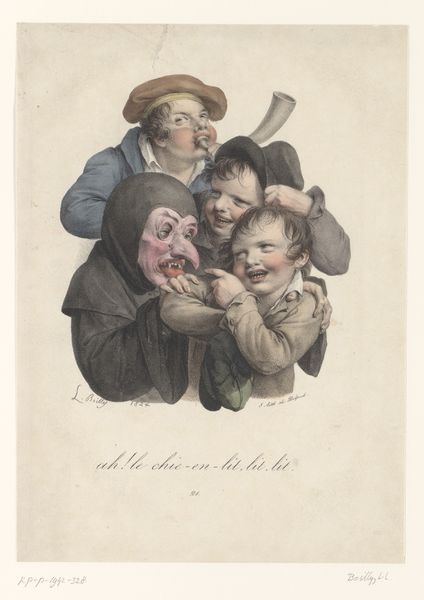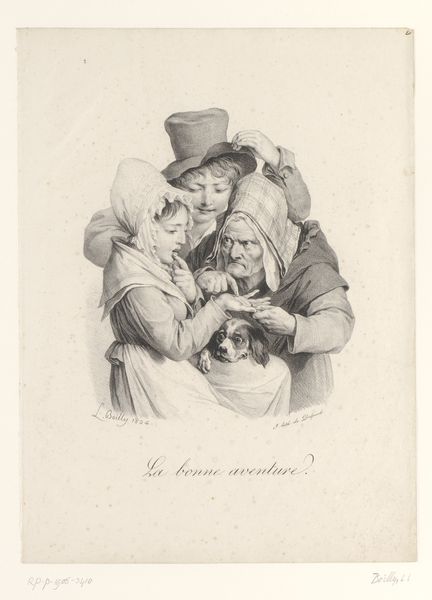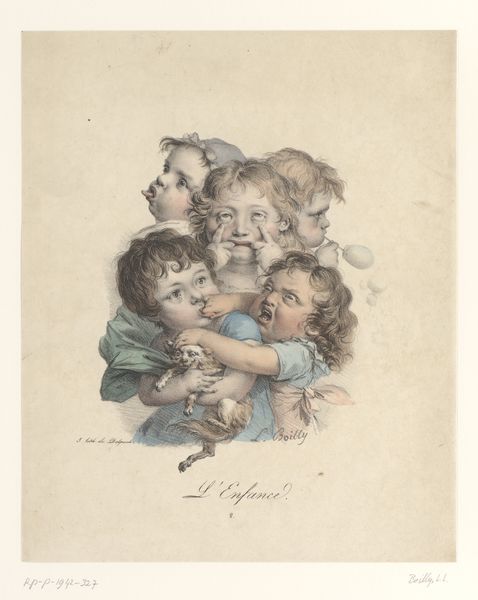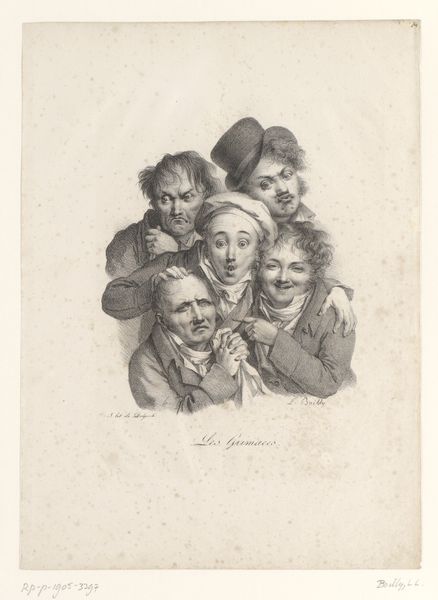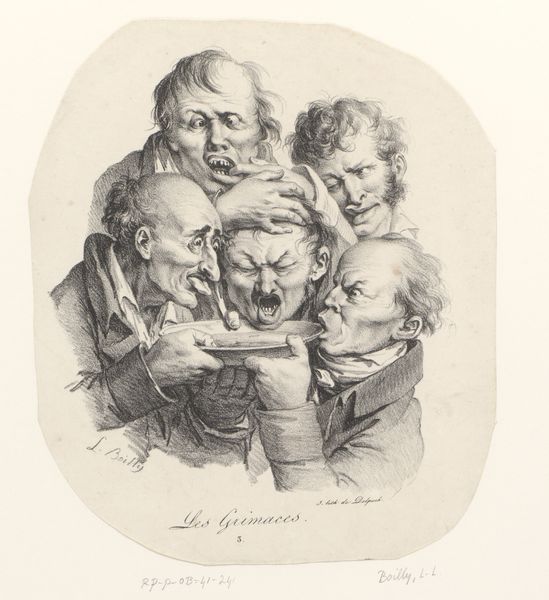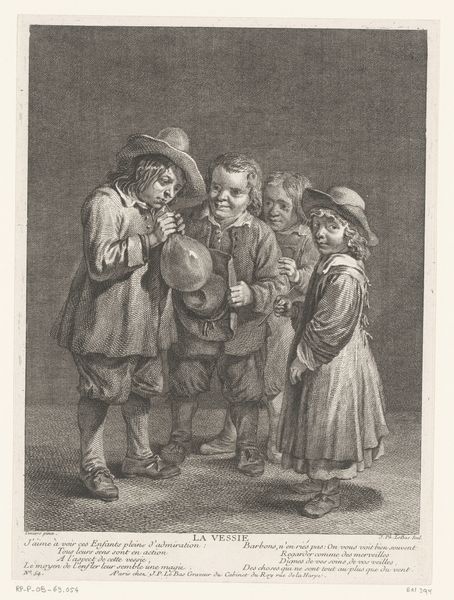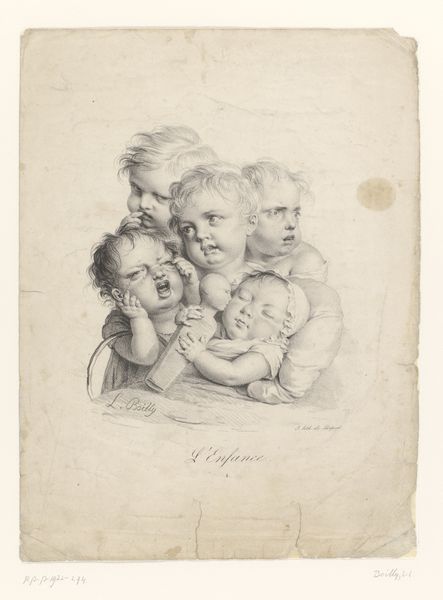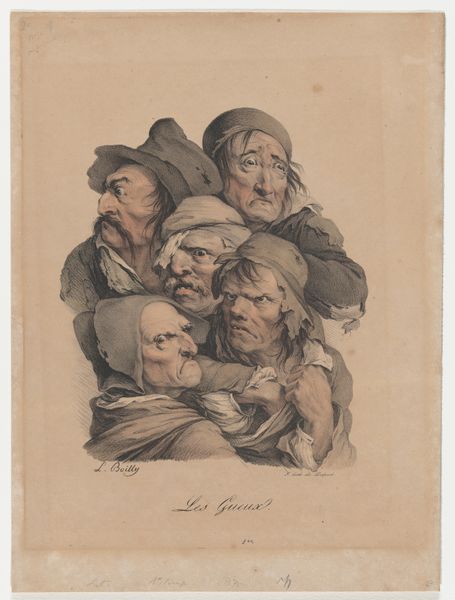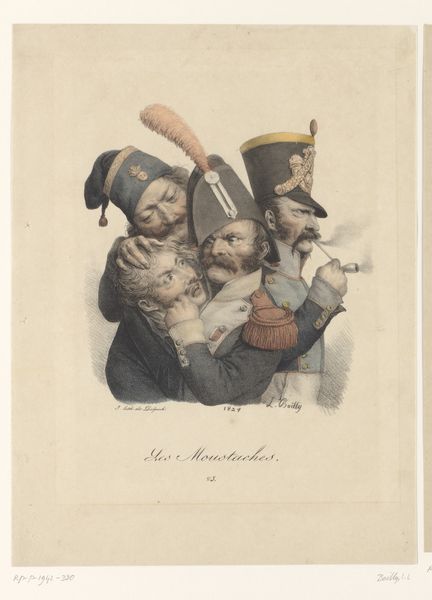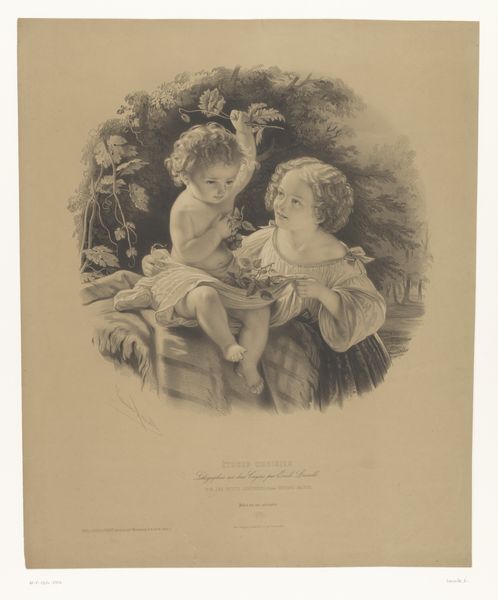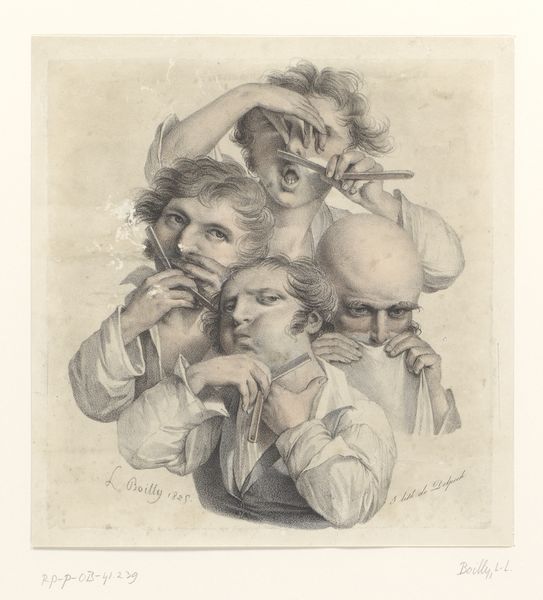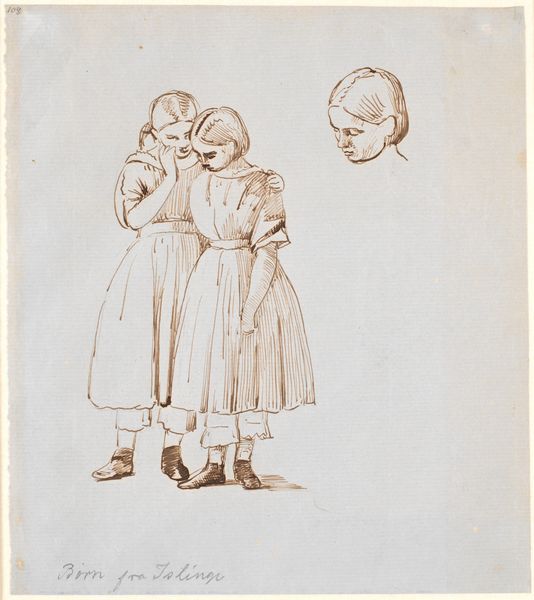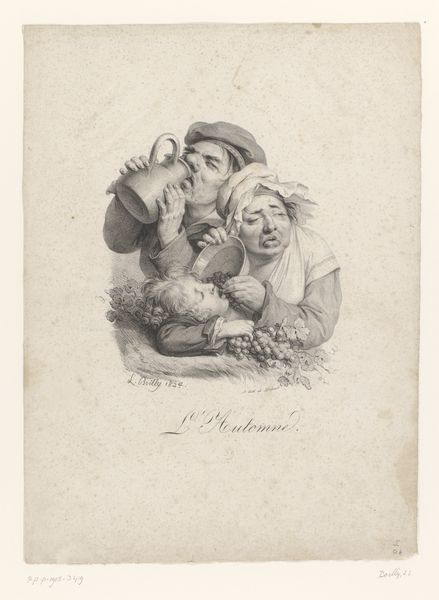
#
facial expression drawing
#
pencil sketch
#
caricature
#
portrait reference
#
pencil drawing
#
animal drawing portrait
#
portrait drawing
#
watercolour illustration
#
portrait art
#
fine art portrait
Dimensions: height 349 mm, width 257 mm
Copyright: Rijks Museum: Open Domain
Curator: Looking at "Vijf jonge schoorsteenvegers" or "Five Young Chimney Sweeps," made around 1824 by Louis Léopold Boilly, what captures your eye first? Editor: Their faces! They're sooty and smudged, but full of life. The artist captured a mix of emotions—innocence, weariness, maybe even a touch of mischief. It is a strangely affecting group portrait. Curator: Indeed, it speaks volumes, and Boilly was known for this kind of direct, engaging portrayal of everyday life. It’s important to remember that chimney sweeps were typically children, often orphans, employed in grueling conditions. Do you notice any recurring imagery that you find interesting in that historical and social context? Editor: Absolutely, their close huddle creates a sense of solidarity. The dark hats contrast with the lighter washes in their faces—the faces of boys placed in extraordinarily challenging circumstances. This simple group portrait, which may seem innocuous on the surface, speaks volumes about child labor and societal disregard for their well-being. Curator: The very materials reinforce that idea—watercolor and pencil on paper feel immediate, personal. As if Boilly wanted to preserve this moment, to offer some dignity. Those shared glances suggest both their shared trauma and the bonds formed through enduring that existence. Editor: I also sense a plea—that one young sweep gazing upward as if looking for respite. Were drawings like this sometimes commissioned as a kind of political call to arms to promote societal reform, or to evoke a compassionate response from those unaware of this dark side of society? Curator: While it isn’t certain that he created this piece as political protest, Boilly certainly captured images that made visible what was normally unseen. Looking at it through our contemporary understanding of labor history, it certainly carries a weight of cultural meaning and speaks to ongoing issues of exploitation. Editor: It’s precisely in their gazes and those little touches—like the wear in their clothes—that the artwork's enduring impact resides. We continue to witness historical conditions being reflected in modern imagery and social structures today. Curator: And that's what makes this piece, though simple in its medium, profoundly memorable and a potent reminder. There are stories hidden within their shadows and smudged cheeks.
Comments
No comments
Be the first to comment and join the conversation on the ultimate creative platform.
